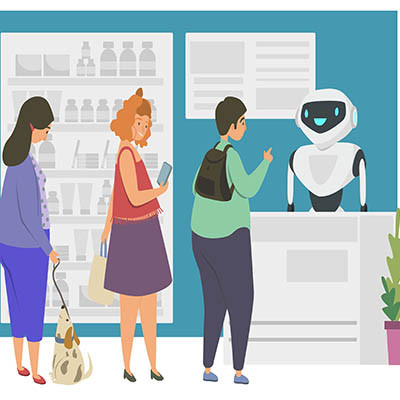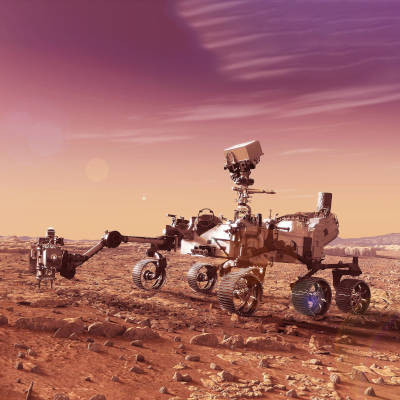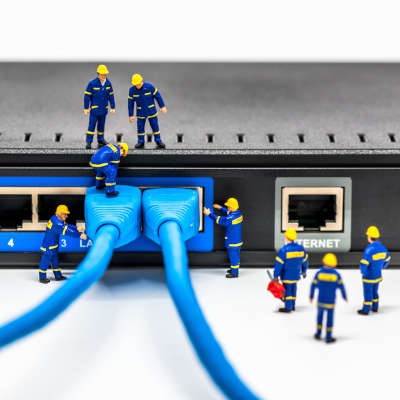Ferrum Technology Services Blog
Automation technology has many workers concerned about the future of their jobs. Computers are one of the many technologies that grow exponentially more powerful with every passing year, and these improvements lead to innovations that can save businesses tons of time and capital, but when applied to automation, does this come at the cost of jobs? Let’s see why workers in certain industries might be concerned about automation, as well as whether or not their concerns are warranted.
Cryptocurrencies--especially those that have recently surged into relevance--rely on blockchain technology, but what many people do not know is that blockchain is far more than a way to exchange digital currencies. In fact, cryptocurrency was just the beginning. Let’s take a look at the other practical uses for blockchain technology, including what it is and how it can help businesses.
Artificial intelligence is one of the most intriguing technologies that has come down the pike. For the small and medium-sized business, it may seem more like science fiction than a solution to their business’ operational problems. Today, AI is more accessible for the SMB than ever, and today, we thought we would share with you a situation where the technology—designed to help out in a bakery—is being used to diagnose cancer.
For businesses that are looking to make large shifts in their operational strategies by adding new technology, they may be looking at some problems when the technology doesn’t take as advertised. Today, we will take a look at how technology, as useful as it can be, can also be problematic if the deployment isn’t handled properly.
The past year has been tough on many businesses. If they’ve learned anything it is the importance of staying flexible. The COVID-19 pandemic has created the need for organizations to move their operations offsite for fears of spreading the virus. With several different pharmaceutical companies now testing and pushing out vaccines for the virus, it seems that offices and other places of businesses will be opening back up, right?
By now, almost everyone is tired of the COVID-19 pandemic. Millions of people are out of work and millions more risk exposure at work. Thousands of businesses have had to close or suspend business. It’s just not a great scene for anybody. Many companies, who can’t just wait around for a vaccine to inoculate enough people for things to go back to normal, have started looking to automation to solve their business’ immediate and long-term problems.
COVID-19 is still a factor that businesses need to consider, especially in terms of their continued operations. With major adjustments required to stay open, many small and medium-sized businesses will need to accept the situation their business is in and implement changes. Fortunately, research that Salesforce summarized in their fourth Small & Medium Business Trends Report suggests that this is happening.
Many business’ supply chains have had a tough year. One positive outcome of this is that the innovation that was happening in that area has accelerated. Today, there are several technologies that are improving the way businesses can track all the goods that makes their business possible. Let’s take a brief look at four of them.
The COVID-19 pandemic has had a major effect on business. Despite this fact, we’re starting to get to the point where most businesses are at least being allowed to attempt to conduct business in a somewhat normal fashion, but it’s definitely a new world out there. Business owners in all lines of business are looking for that tool that can improve productivity, make their operations more efficient, and spit out the metrics they need to tweak them.
I want you to take a moment and consider something: is your business prepared to survive any kind of data disaster? If you aren’t, you need to ensure that your systems—all your systems—can recover from whatever feasible event might impact them. This is what is known as IT resilience. Let’s dive in a little deeper.
The impact of COVID-19 to businesses has been such that we will not likely return to the way business was run before all of this happened. A major factor to this is how businesses once made use of their technology. The shifts that have occurred in the last few months will not likely go away, even after the pandemic ends.
As workplaces and offices everywhere have struggled to cope with the restrictions brought on by social distancing mandates, the adoption of automated solutions has surged ahead. Of course, this does open a few important questions to consider. For instance, what this could mean for employment post-pandemic, and how automation may be used in the future to mitigate the impacts we’re currently experiencing.
The Coronavirus outbreak is one of the most remarkable events in our lives, but it is not the first time that people have had to deal with these seemingly mystical forces. Today, we have been able to stem the tide a little bit with our access to information technology, but for past pandemic victims, some good did come out of tragedy. This month we thought we’d talk about the importance of innovation in dark times.
Augmented reality (AR) has been talked about for what seems like ages. The technology, which overlays real time information over a displayed image, is seemingly advancing for retail use, but there have been several factors that have kept it from being as mainstream as it will be in the future. Let’s take a look at AR and how the efforts of some of the biggest tech companies in the world are aiming to push the technology to the limits.
The 2020 Consumer Electronics Show is always a good place to see the most innovative consumer technology. CES features products of all types from companies of all sizes. This year, there was a strong contingent of companies bringing products to market in the physical security space. This isn’t all that uncommon, but the reaction to many of these devices is noteworthy.
AR, or augmented reality, has been touted as the next “big thing” for nearly a decade, while other “big things” have been introduced. Google Glass almost made AR more commonplace, but security and privacy concerns turned it into a non-starter. Today, AR has taken a new life, so let’s review some predictions for the future.
Technology is something that experiences rapid change, and while it’s usually beneficial to businesses, change can often bring with it a set of growing pains. You might be able to get more done and reach more customers, but it might stretch your resources, frustrate employees, and force new processes upon your organization. When this change comes, will you lament the good old days, or will you seize the opportunity to improve your business as a whole? When it comes to technology, the answer might make or break the future of your organization.




















